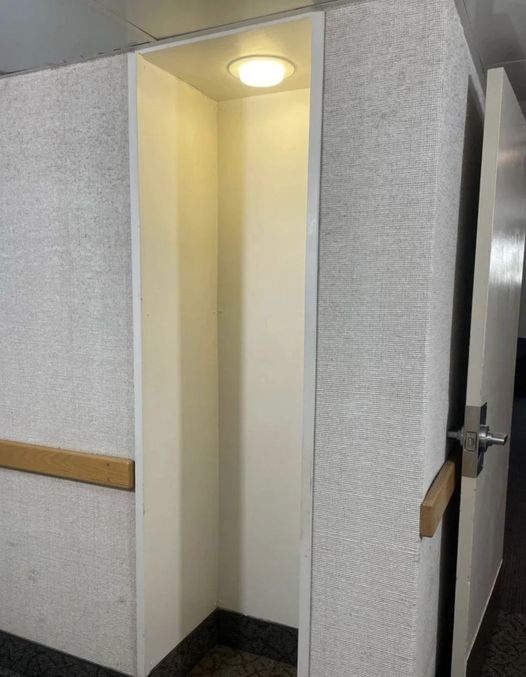Imagine a time when reaching out to friends or family wasn’t as easy as tapping a screen. Long before smartphones and instant messaging, college students in the 1960s, ‘70s, and ‘80s depended on a simple yet invaluable resource—the phone booth. These booths were much more than just a way to make a call; they were safe havens amidst the bustling dorm life, offering privacy and a connection to the outside world.

Hidden Gems on College Campuses: The Social Hub of the Past
Walk through the older sections of college campuses today, and you might notice hidden nooks with a single light bulb or an empty space where a phone once hung. These spots aren’t just relics of the past; they were once vital social hubs where students eagerly waited their turn to reach out to loved ones. In an era before cell phones, these booths were the only link between students and their families, providing comfort and connection during their time away from home.
The Rise of Phone Booths: A Lifeline for Students Far From Home
During the mid-20th century, phone booths became essential on college campuses, particularly in crowded dormitories where privacy was a luxury. Many students came from distant places, and these booths were their only way to stay connected with their families. The booths were more than just a utility—they were a bridge to home, helping students cope with homesickness and loneliness.
Dorm life back then was noisy and chaotic, with roommates chatting, music playing, and constant foot traffic. In the midst of all this, the phone booth provided a brief escape. Although these booths were small and modestly designed, they were enough to create a sense of privacy. Leaning against the wall, students could talk freely without feeling the pressure of dorm life pressing in on them.
The Simple Yet Impactful Design of Phone Booths
The design of these booths was straightforward: a small, enclosed space with a phone mounted on the wall and a light overhead. Many didn’t even have full doors, but they provided just enough seclusion to make a student feel momentarily isolated from the surrounding noise. The light wasn’t just functional; it created a calming atmosphere, allowing students a few moments of solitude to speak their hearts out.
As the 1990s rolled in, cell phones began to change everything. No longer did students need to rely on communal payphones to stay in touch. The arrival of personal mobile phones made communication instant and private. Slowly, the once-essential phone booths began to disappear, becoming relics of a bygone era as everyone transitioned to the convenience of mobile technology.
More Than Just a Way to Call Home
For those who lived through that time, phone booths were more than just a place to make a call—they represented a different approach to communication. Reaching someone required effort and intention. Unlike today’s instant messaging, students had to gather spare coins, wait their turn, and sometimes even queue up for their chance to speak to a loved one. This effort made every call more meaningful and every conversation more cherished.
Though most phone booths have disappeared, some remnants still exist on older campuses, serving as nostalgic reminders of a time when making a phone call was an event. The sound of coins dropping into the slot, the hum of distant conversations, and the joy of hearing a familiar voice after weeks apart made each call unforgettable.
A Nostalgic Glimpse into the Past
Today, we’re surrounded by instant, effortless communication, but there’s something nostalgically charming about the memory of phone booths. Walking past one of these forgotten corners, you can almost feel the cool touch of the payphone, the satisfying click of the receiver, and the thrill of dialing a number. It was slower, yes, but it was also more personal. Each call was a moment of connection in a world that moved at a much gentler pace.
For many students of the past, phone booths were lifelines—a momentary escape from the stress of classes and the hustle of campus life. Whether or not the booths had full doors, they offered a sense of privacy that was hard to come by in shared living spaces. They were places where students could pour their hearts out, share their worries, or simply hear a friendly voice from home.
A Piece of History That Still Matters
Nowadays, it’s easy to dismiss phone booths as outdated relics. But in truth, they symbolize how far we’ve come in communication technology. Back then, making a phone call wasn’t just an action—it was an event. It required time, effort, and sometimes even courage to pick up that phone and dial. The next time you come across one of these quirky little spaces on campus, pause for a moment. Think of the students who once stood there, nervously waiting to connect with someone miles away.
These booths are more than just historical artifacts; they’re reminders of a time when even a brief conversation felt like a luxury. In today’s world of instant communication, it’s easy to forget the joy of simply hearing someone’s voice. But for those who remember, those old phone booths still hold a special place in their hearts. They remind us of a slower, more thoughtful time—a time when communication was cherished and not taken for granted.





